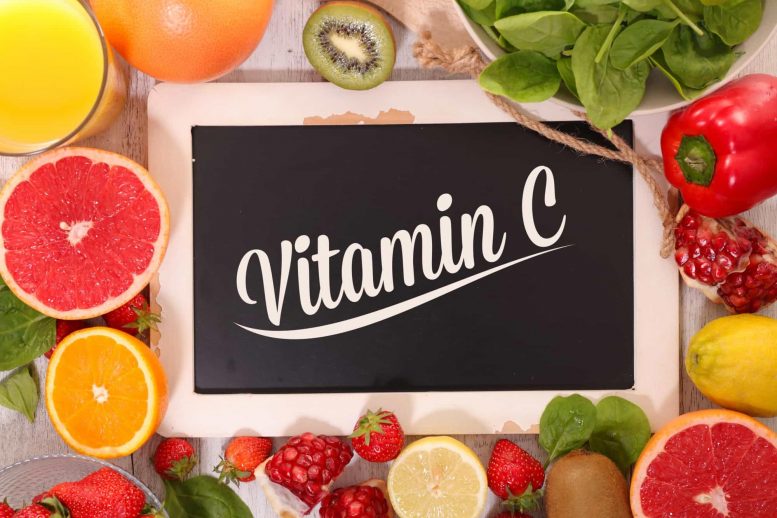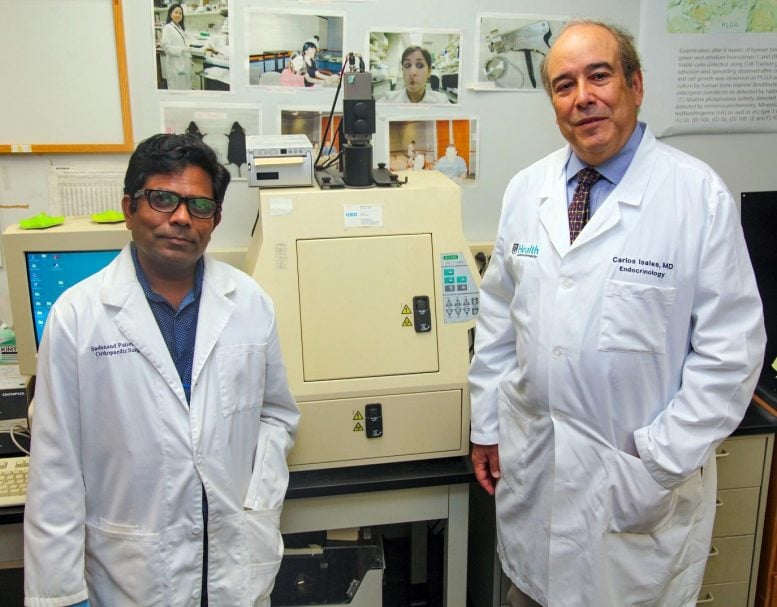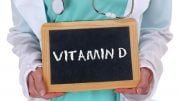
Research on high-dose vitamin C for COVID-19 treatment shows promise for specific groups. When studying its effects on aging, the natural transporter levels needed for vitamin C to enter cells play a crucial role in its effectiveness.
High doses of vitamin C under study for treating COVID-19 may benefit some populations, but investigators exploring its potential in aging say key factors in effectiveness include levels of the natural transporter needed to get the vitamin inside cells.
Age, race, gender, as well as expression levels and genetic variations of those vitamin C transporters that make them less efficient, all may be factors in the effectiveness of vitamin C therapy against COVID-19 and other maladies, investigators at the Medical College of Georgia Center for Healthy Aging report in a commentary in the journal Aging and Disease.
The investigators recommend that those factors be considered in the design and execution of clinical trials, and when trial results are analyzed, for COVID-19 as well as other conditions, says Dr. Sadanand Fulzele, aging researcher and the article’s corresponding author.
The novel nature and lack of immunity against the coronavirus has prompted a worldwide pursuit of effective treatments for COVID-19, they write. That includes repurposing drugs with known safety profiles, including Vitamin C, an established immune system booster and antioxidant, which made it a logical choice to explore in COVID-19. Both strategies are needed in response to infection with the novel coronavirus to ensure a strong immune response to stop the virus from replicating in the body, and to avoid the over-the-top, destructive immune response the virus itself can generate if it does.

Drs. Sadanand Fulzele and Carlos Isales. Credit: Kim Ratliff, Production Coordinator, Augusta University
There are at least 30 clinical trials underway in which vitamin C, alone or in combination with other treatments, is being evaluated against COVID-19, some with doses up to 10 times the recommended 65 to 90 milligrams daily of vitamin C.
Factors like whether or not vitamin C can get inside the cell, likely are an issue in the effectiveness the therapies ultimately show, says Dr. Carlos M. Isales, co-director of the MCG Center for Healthy Aging and chief of the MCG Division of Endocrinology, Diabetes, and Metabolism.
In fact, without adequate transporters on a cell’s surface to get the water-soluble vitamin past the lipid layer of cell membranes, particularly large doses may enable the vitamin to cluster around the outside of cells where it actually starts producing oxidants, like damaging reactive oxygen species, rather than helping eliminate them, says Isales, a study coauthor.
“We think it’s important to look at transporter expression,” Fulzele says.
They suspect low transporter expression is a factor in the mixed results from vitamin C’s use in a variety of other conditions. Clinical trials in osteoarthritis, for example, an autoimmune disease where a misdirected immune system is attacking the joints, has gotten mixed results, Fulzele says. However its usage in other viral-induced problems, like potentially deadly sepsis, has shown benefit in reducing organ failure and improving lung function in acute respiratory distress syndrome, which is also a major cause of sickness and death with COVID-19.
At the time their Aging and Disease paper was published, there were not yet published studies of the efficacies of high-dose, intravenous vitamin studies underway for COVID-19.
Fulzele, who works on vitamin C in aging, and others have shown that some conditions, like osteoarthritis and even normal aging, are associated with significant downregulation of at least one subtype of vitamin C transporter.
In fact, part of the paradox and concern with COVID-19 is that those most at risk mostly have both lower levels of vitamin C before they get sick and fewer transporters to enable the vitamin to be of benefit if they get more, Fulzele says.
Many of those most at risk from COVID-19, including individuals who are older, Black, male, and with chronic medical conditions like osteoarthritis, hypertension, and diabetes, tend to have lower levels of vitamin C, another reason vitamin C therapy would be considered a reasonable treatment, Isales says. The investigators also note that patients may develop a vitamin C deficiency over the course of their COVID-19 illness since, during an active infection, vitamin C is consumed at a more rapid rate. Insufficient levels can augment the damage done by an overzealous immune response.
While not routinely done, transporter expression can be measured today using PCR technology, a method also used for novel coronavirus as well as influenza testing. While increasing transporter expression is not yet doable in humans, one of Fulzele’s many research goals is to find a drug or other method to directly increase expression, which should improve the health of older individuals as well as those with other medical conditions that compromise those levels.
He notes that reduced transporter levels that occur naturally with age are a factor in the reduced immune function that also typically accompanies aging. That means that even when a 60-year-old and a 20-year-old both have a healthy diet in which they consume similar, sufficient amounts of vitamin C, the vitamin is not as effective at boosting the older individual’s immune response. Reduced immune function in older individuals is known to put them at increased risk for problems like cancer and COVID-19.
Low vitamin C levels also have been correlated with higher mortality in older individuals from causes like cardiovascular disease. High oxidative stress, a major factor in conditions like cardiovascular disease as well as aging and now COVID-19, also is associated with significantly reduced expression of the vitamin C transporter.
Isales and Fulzele doubt that taking a lot of vitamin C is a good preventive strategy against COVID-19, except in those individuals with a known deficiency.
Vitamin C is an essential vitamin, which means people have to consume it in their food or supplements. Foods naturally high in vitamin C include oranges, potatoes, tomatoes, broccoli, and Brussels sprouts. The vitamin’s diverse roles in the body also include the formation of blood vessels, collagen, and cartilage.
Reference: “Low level of Vitamin C and dysregulation of Vitamin C transporter might be involved in the severity of COVID-19 Infection” by Gregory Patterson, Carlos M. Isales and Sadanand Fulzele, 11 November 2020, Aging and Disease.
DOI: 10.14336/AD.2020.0918
Gregory Patterson, a medical student who worked with Fulzele over the summer between his first and second year of medical school as part of MCG’s Medical Scholars Program, is first author on the study. The research was supported in part by the National Institutes of Health.









Researchers Find Keys to Vitamin C’s Effectiveness Against COVID-19
This is klickbite title and if I count such titles on your page the Covid can be cured without any problems as researchers have always a working solution
Great, I’m glad they’re looking at increasing the transporter efficacy of vitamin C. Hopefully they can increase this enough that oral vitamin C will have some impact.
As it is there are many problems with this story. First of all it is based on the premise the vitamin C has not been as beneficial against Covid-19 for older patients as it has for younger patients. This is demonstrably false. Of the say 30 some trials of vitamin C against COVID about 10 of them are complete, 5 were completed 6 months ago (Wuhan / Shanghai China), and all of them demonstrated equal benefit across the age span from youth to those in their 80’s. Old patients were already predisposed to harsher outcomes, and vitamin C (note that intravenous form is required) actually alleviated that. So the whole premise that vitamin C doesn’t work as well for older people is wrong. Look at the SOFA scores. Look at IL6 vs IL11. Dramatic improvement in the older population. In fact nothing modifies IL6:IL11 like IVC (intravenous vitamin C) does, not HCQ, not Remdesivir.
Also doses in these studies are not just “some with doses up to 10 times the recommended 65 to 90 milligrams daily of vitamin C”. No, and in fact doses that low as 10*90mg / day, or 900mg are way to low to demonstrate ANY benefit, especially orally. The doses that work are at a minimum intravenous 12,000 mg / day, which is 140 times the RDA (not 10). Most of the studies are at least 3000 mg / day, and as high as 24,000 mg / day. This may seem like a lot but the LD50 for AA is around 800,000 mg, given at once, so these presumably super-high doses are 1/40th that amount and are thus extremely tolerable and safe.
Regardless, I think increasing the transporter efficacy is notable. Studies show that Vitamin K3 and various bioflavanoids potentiate IVC for cancer patients … perhaps those work by increasing transporter efficiency. Definitely worth a look.
Agree with all you shared in comments. My primary source for relevant data is multiple studies, treatment plans & patient outcomes are found at http://www.orthomolecular.org, specifically sited in numerous chronilogical press releases under Resources tab. Great content to include in your overall knowledge of topic! Enjoy! 😉 Frances
The previous articles regarding Vitamin C studies do not make sense: being contradictory to each other. You both may be right and wrong.
As no two people/patients are exactly alike: either of you could be correct or wrong with your answers regarding Vitamin C.
Plus, it’s a bit boastful from one to totally contradict another if you were not a part of the same study, or did a like study yourself.